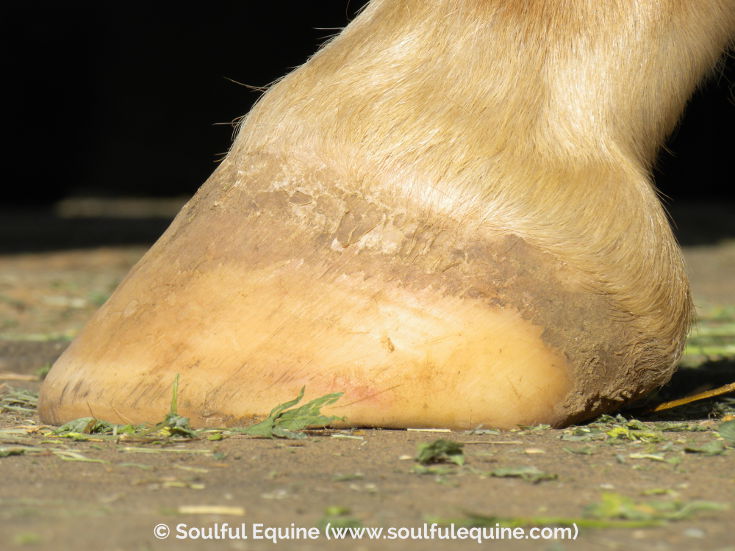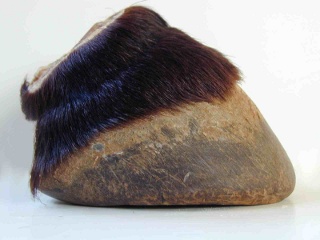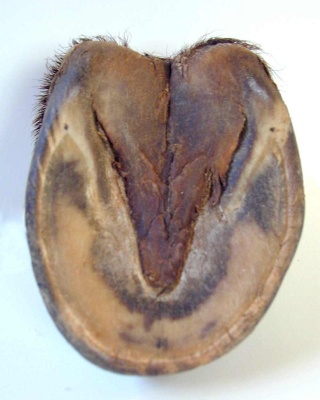
I love the saying “our eyes are the windows to our souls.”
Let’s take that a step further and say, “Our horses’ hooves are the windows to their bodies.”
In a previous natural hoof care articles, I discussed the importance of looking at the horse from a whole-body standpoint.
In those articles, I mentioned that the hoof is a by-product of most everything else that’s going on in the body.
It’s important to note that you should not ignore the hoof. Instead, use it as a guide to uncover the root cause of issues and become more familiar with what a healthy hoof looks like. However, despite the mounds of information available on identifying a healthy hoof, I still find that this topic is somewhat foreign to the majority of people involved with horses.
A horse’s hooves suffer the most when we don’t treat their bodies well. The body is intelligent when prioritizing the allocation of nutrients (the same holds true for the human body). The skin, hair and hooves are usually the last to get nutrients, so hoof problems could be an indicator of a problem somewhere else in the body.
Thus, the saying, “Our horses’ hooves are the windows to their bodies.”
An unnatural and inappropriate diet can materialize as deformed or damaged hooves. In fact, the last six months or longer of a horse’s general health can often be seen in the hooves.
Many people believe their horse’s diet is not poor despite the fact that they’re feeding them processed feeds, processed supplements, and a high sugar and high starch diet.
The majority of horses’ hooves you’re likely to see are not healthy. Common deformities have become the de facto standard in the horse industry.
Although natural hoof care has gained popularity over the last 10+ years, there is still a long way to go when it comes to educating the everyday horse guardian, as well as traditional farriers, about strategies for identifying a healthy hoof and how to maintain it.
Healthy Hooves Share Similar Characteristics
Horses’ hooves can grow in a variety of shapes based on individual conditions, genetics, etc., but healthy hooves share similar characteristics.
Healthy hooves are smooth with no rings or distortions in the hoof wall.”
If you see ridges or rings (may also be referred to as event rings) of any kind on the outside of the hoof wall, it’s important that you identify the cause. The humorous part of that statement is that “rings” in the hoof wall have become something that most horse guardians and traditional farriers don’t pay attention to. However, if we called them “founder rings” then that may raise some eyebrows and get people thinking about what modifications they need to make in their horse’s diet.
The important thing for you to know right now is that you must pay attention to it and one of the biggest causes of it is an unnatural and inappropriate diet for that particular horse.
Rings in the hoof wall can provide a wealth of information not only related to diet, stress, etc. but also hoof dysfunction.
The hooves should not easily chip and the hoof wall/horn should not easily break off.”
Keep in mind that I’m talking about barefoot horses that are kept on a competent natural hoof care program. There are some exceptions to this rule, but once you transition your horse to barefoot and you have addressed the three key areas, which include, movement, diet and a proper barefoot trim, then this statement should hold true.
If you continue to have problems with your horse going barefoot, or the characteristics of a “healthy hoof” are still not obvious to you in your own horse, then you are missing one of those key ingredients.
Something to keep in mind is that it’s important to educate yourself. The barefoot movement is continuing to evolve and we are learning new things every day on what works and what doesn’t work for the domesticated horse.
Hooves should have short toes and low heels.”
Horses are not meant to have hooves that look like duck feet. I use this analogy because I see many shod horses, as well as traditionally trimmed barefoot horses, who have long or underrun heels and a flared long toe (which is referred to as the forward foot syndrome).
Neither are horses meant to walk around like they are in ladies high-heeled shoes or are on stilts.
If you would like more information on measurements of wild horse hooves I would highly recommend Jaime Jackson’s book The Natural Horse where he provides information on hoof shape and form in detail. It’s an exceptional book if you are looking for measurement information.
Grant it, the measurements in that book were taken on wild horses, however, keep in mind that our model and guide is the wild horse.
Your horse should have a nice heel first landing in order to continue to stay sound.”
It is your natural hoof care professional’s job to guide the hoof and set it up properly for a heel first landing. I highly recommend that you learn how to spot what this looks like since usually the “norm” in the horse industry is a toe first landing.
Ask a competent hoof care professional to help you learn to have an eye for how your horse is landing. This is very important – I can’t stress it enough. If they are landing toe first, there are multiple reasons for it and one can be linked to diet. Another is linked to improper development of the back of the foot, which is common in domesticated horses.
Healthy hooves should not have flaring or a stretched white line.”
A stretched white line can be an indicator of an unnatural and inappropriate diet, imbalanced hooves, etc. This goes back to not only diet but also properly guiding the hoof so that over time the horse develops a healthy toe length and an overall balanced hoof.
A nice straight angle of hoof growth is important in a healthy hoof. It’s best to follow the new angle from the upper 2 inches of growth from the coronary band. This is important in order to keep flares under control, but it can be detrimental if someone becomes flare happy by trying to remove all the flare from a hoof in one trim.
On that note, if your horse continues to flare between trims, it’s important to figure out the underlying cause. Again, diet is usually the culprit if the horse is getting proper routine maintenance trims.
The frog should be large and calloused.”
The “large” part of that statement about the frog is true, however frogs will vary in consistency based on terrain. In dry terrain they will have a leather look to them and will be wider and flatter. In wet weather, the frog will have a more rubber type look to it and will also be more full versus flat.
Most unhealthy hooves have a very narrow frog along with contracted heels.
Pictures Of A Wild Horse Hoof – Western United States


A Note On Thrush
Something I did not address above which is a side topic is thrush. A note I would like to make on this subject is that if you continue to have recurring thrush issues, it’s important to figure out the root cause. I believe thrush prevention not only has to do with environment and proper trimming but also with proper diet and a strong immune system.
In Summary
The outline I provided above should help in identifying a healthy hoof, but it is by no means a complete list. Learning to properly read the hoof comes with a lot of study, practice and experience, but I feel everyone involved with horses should know the basics.
Side note – these basics are not the norm in the horse industry.
Now that you have a general list on identifying a healthy hoof it’s time to go out and practice reading hooves. Go out to your horse, a nearby boarding facility or any horse event. Take your list with you and start to study hooves.
The best way to learn is through observation!
Please share this article with your horsey friends on Facebook or Twitter or better yet, print it and pass out copies to horse facilities in your area.
Keep it soulful,
Stephanie Krahl
###
Photo Credits:
- Main photo of white hoof – This is a hoof that belongs to one of my personal horses that I trim. His name is Ransom, a 4 year old Quarter Horse Gelding. He has been barefoot all his life and raised on a paddock paradise track system on my property since he was one year of age. This picture was taken one week after a maintenance trim.
- Wild Horse Hooves Photo Credit – Permission Granted by Cindy “Hawk” Sullivan from Tribe Equus. * See the other educational information section below.
Recommended Reading
For learning more about a healthy barefoot horse, I highly recommend the books below. You can view my other book recommendations by going to our Amazon Store where I hand selected books for continued education: Soulful Equine’s Recommended Books. You can not go wrong by adding at least one of these wonderful books to your equine health care library.
Where to find other educational information from this article:
More Pictures of the Wild Horse Hoof – Western United States, from“Tribe Equus” – “Myth” vs. “Truth”… Cindy does an interesting comparison between traditional beliefs (Myths) and what the wild horse model actually shows us (Truth).
